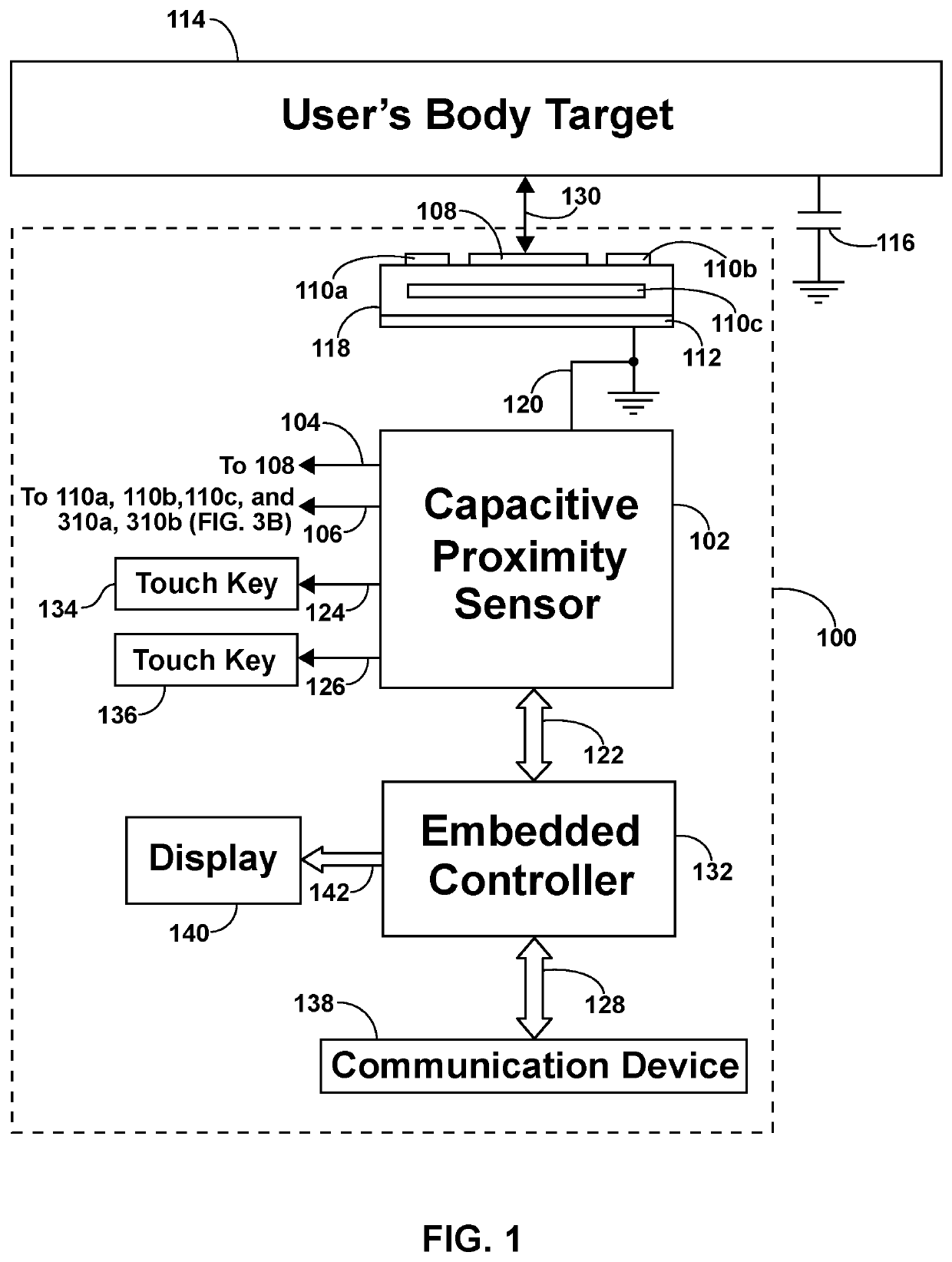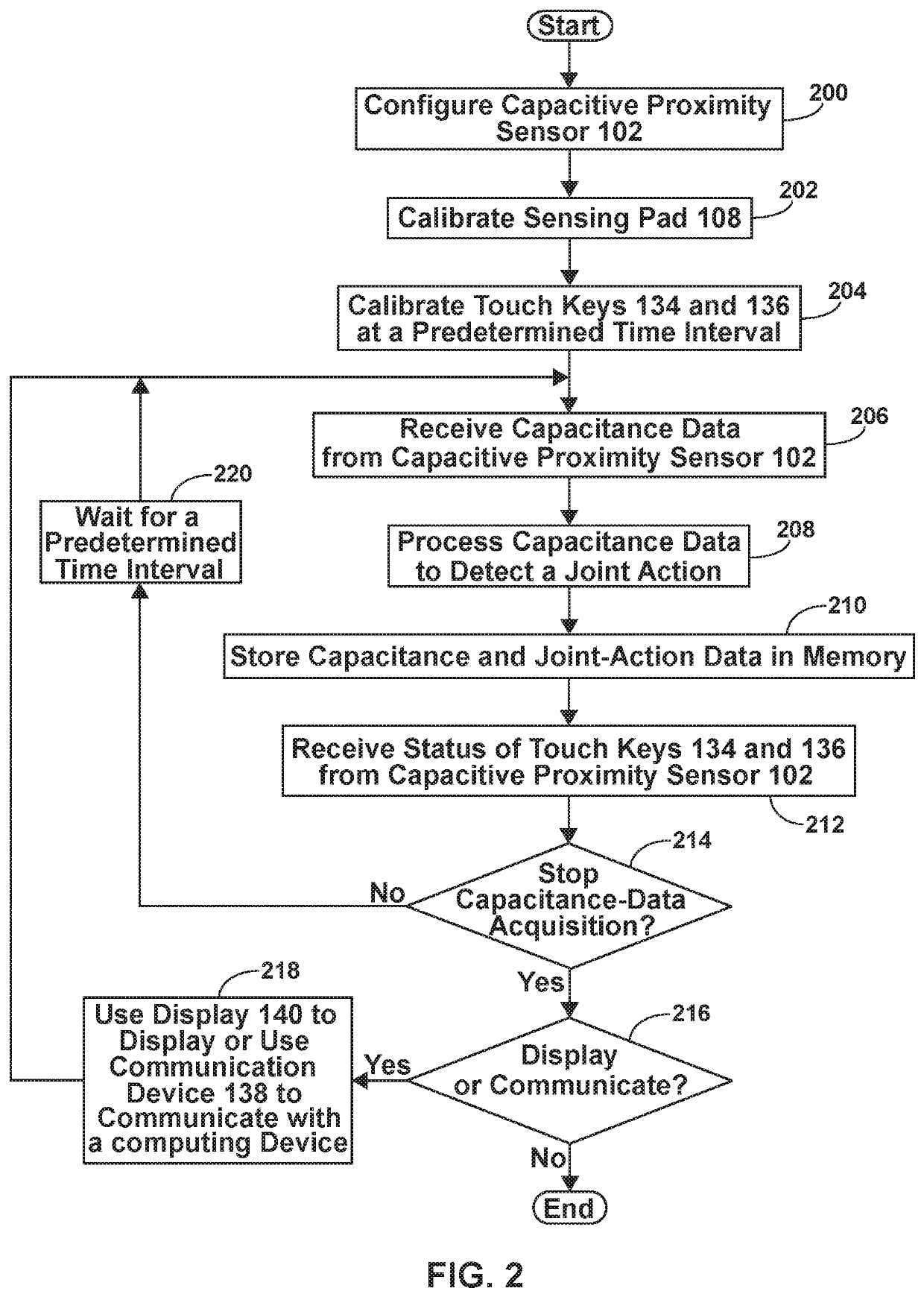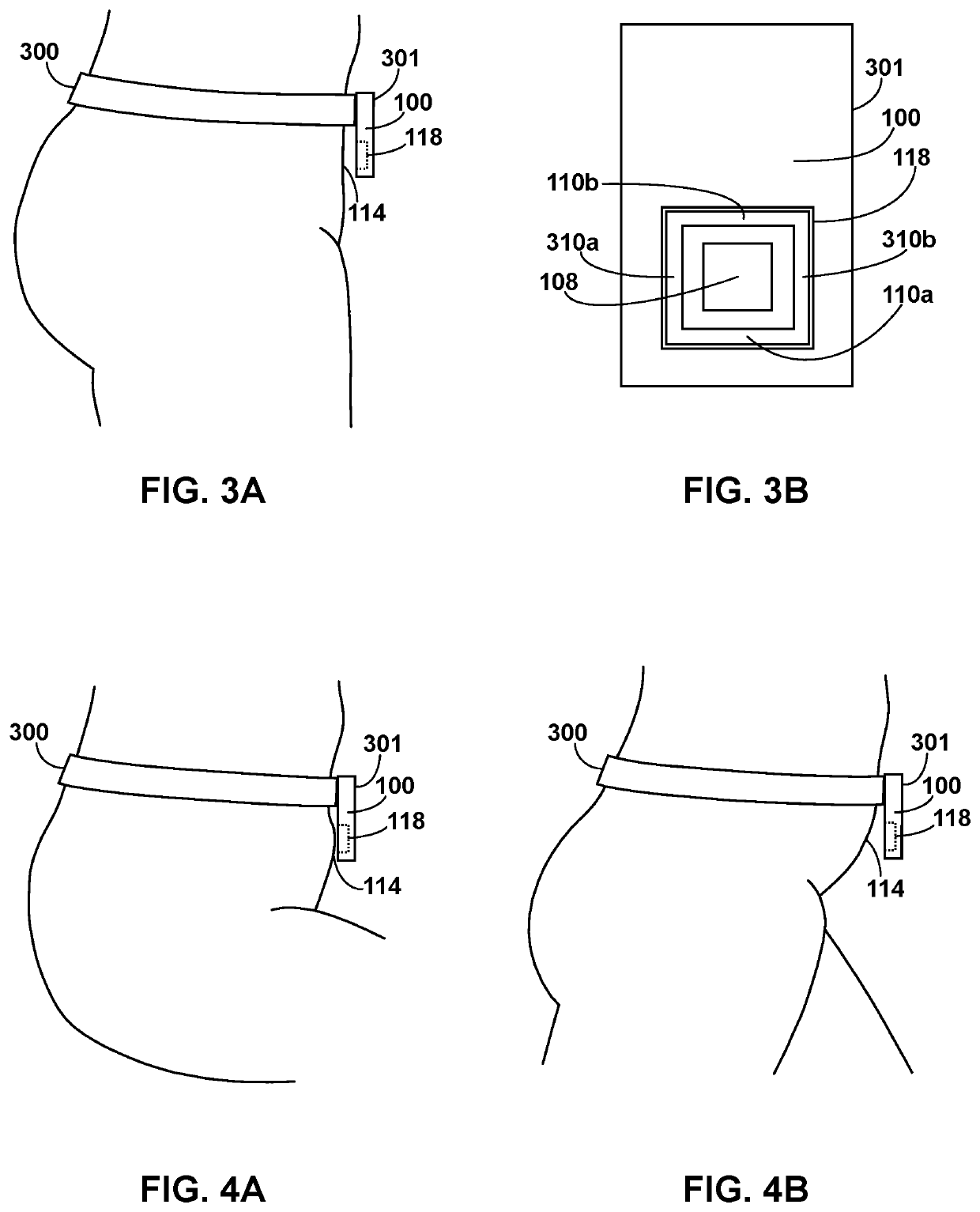Wearable hip joint-action detectors
a detector and hip joint technology, applied in the field of wearable hip joint action detectors, can solve the problems of inability to detect other types of physical activity, inability to reliably distinguish between sitting and standing, and high risk of heart disease and other causes
- Summary
- Abstract
- Description
- Claims
- Application Information
AI Technical Summary
Benefits of technology
Problems solved by technology
Method used
Image
Examples
first embodiment
[0080]A first embodiment of the wearable joint-action sensor is illustrated in FIGS. 3A and 3B. FIG. 3A is a side view of wearable joint-action sensor 100 inside a housing 301 worn on the right waist of the torso (the torso is the first body segment in this embodiment) of a user (a human being in this embodiment) with a waist belt 300 for detecting joint actions, such as flexion and extension, of the right hip joint of the user. Wearable joint-action sensor 100 inside housing 301 incorporates sensing plate 118 (details in FIGS. 1 and 3B), which is illustrated by a dotted outline. The right hip joint links the right abdomen of the torso to the right thigh of the right upper leg (the right upper leg is the second body segment in this embodiment), and sensing pad 108 on sensing plate 118 of wearable joint-action sensor 100 is in the proximity of the first body segment (the right abdomen of the torso above the right thigh) for detecting separation 130 (in FIG. 1) between capacitive prox...
second embodiment
[0093]A second embodiment of the wearable joint-action sensor is illustrated in FIG. 5. FIG. 5 is a side view of wearable joint-action sensor 100 inside a housing 501 worn on the right shoulder of the torso (the torso is the first body segment in this embodiment) of a user (a human being in this embodiment), on a shoulder pad 500 with a shoulder strap 502, for detecting actions, such as abduction and adduction, of the right shoulder joint of the user. Wearable joint-action sensor100 inside housing 501 incorporates sensing plate 118, which is illustrated by a dotted outline. Sensing plate 118 of wearable joint-action sensor 100 is in the proximity of the user's right shoulder of the torso and the top of the right upper arm (the right upper arm is the second body segment in this embodiment), and both the right shoulder of the torso and the top of the right upper arm (i.e. the region comprising both the first and second body segments) serve as user's body target 114 for sensing plate 1...
third embodiment
[0099]A third embodiment of the wearable joint-action sensor is illustrated in FIG. 7. FIG. 7 is a side view of wearable joint-action sensor 100 inside a housing 701 worn on the wrist region of the right forearm (the right forearm is the first body segment in this embodiment) of a user (a human being in this embodiment) with a wristband 700 for detecting joint actions, such as flexion and extension, of the right wrist joint of the user. Wearable joint-action sensor 100 inside housing 701 incorporates sensing plate 118, which is illustrated by a dotted outline. Sensing plate 118 of wearable joint-action sensor 100 is in the proximity of the wrist region of the right hand (the right hand is the second body segment in this embodiment) and the wrist region of the right forearm. The right wrist joint links the wrist region of the right forearm to the wrist region of the right hand, and both the wrist region of the right forearm and the wrist region of the right hand (i.e. the region comp...
PUM
 Login to View More
Login to View More Abstract
Description
Claims
Application Information
 Login to View More
Login to View More - R&D
- Intellectual Property
- Life Sciences
- Materials
- Tech Scout
- Unparalleled Data Quality
- Higher Quality Content
- 60% Fewer Hallucinations
Browse by: Latest US Patents, China's latest patents, Technical Efficacy Thesaurus, Application Domain, Technology Topic, Popular Technical Reports.
© 2025 PatSnap. All rights reserved.Legal|Privacy policy|Modern Slavery Act Transparency Statement|Sitemap|About US| Contact US: help@patsnap.com



